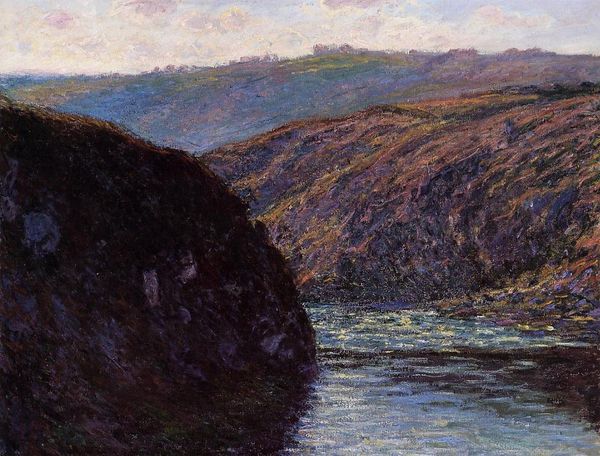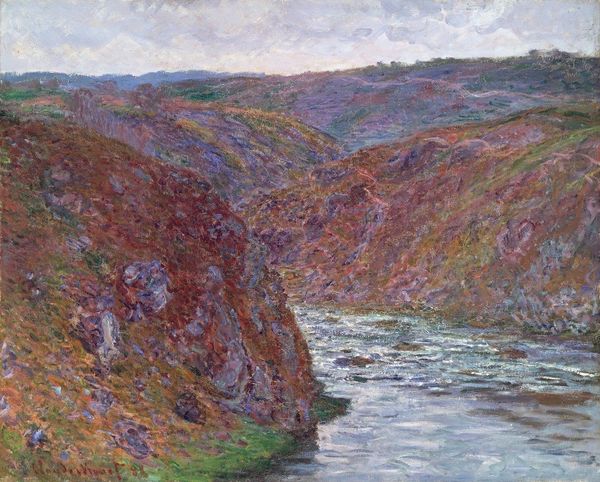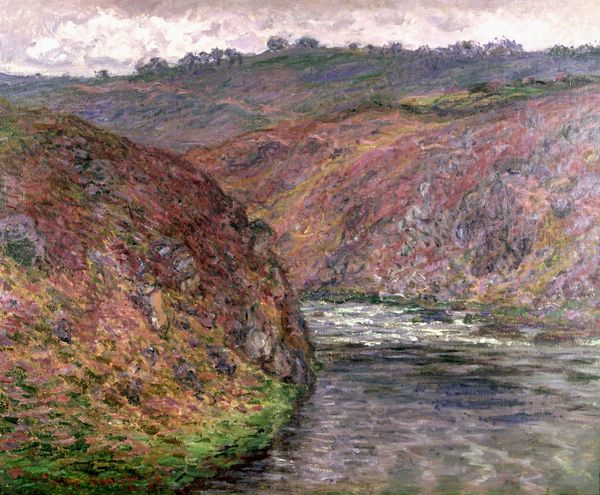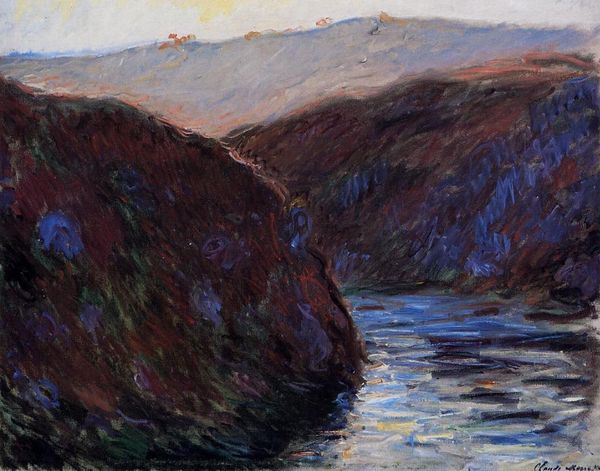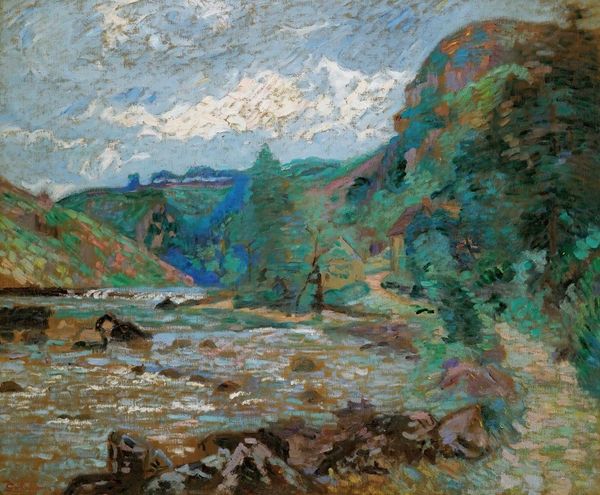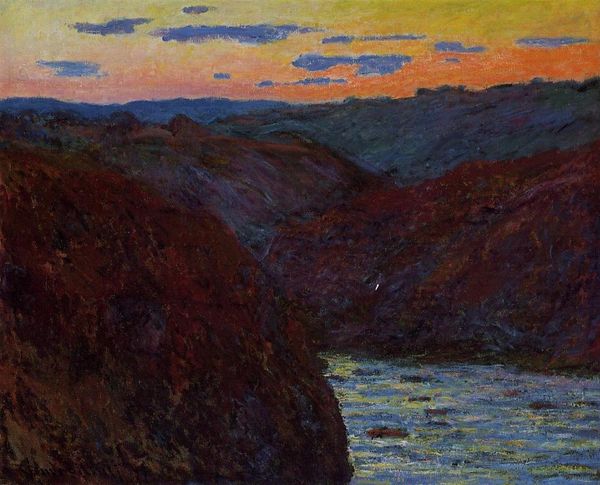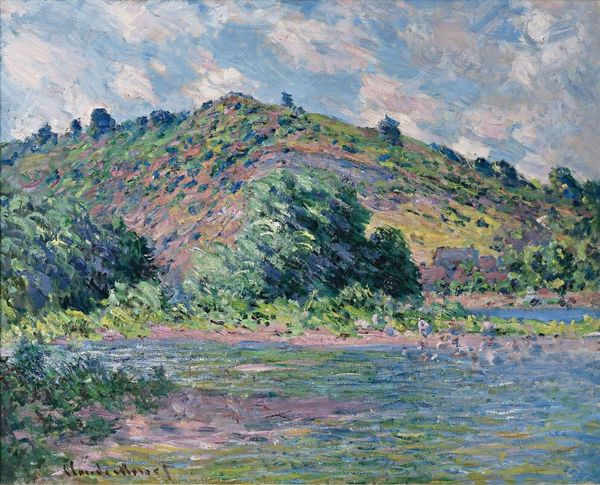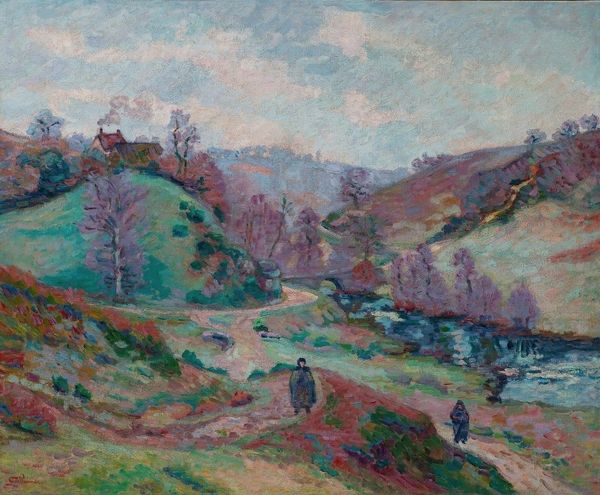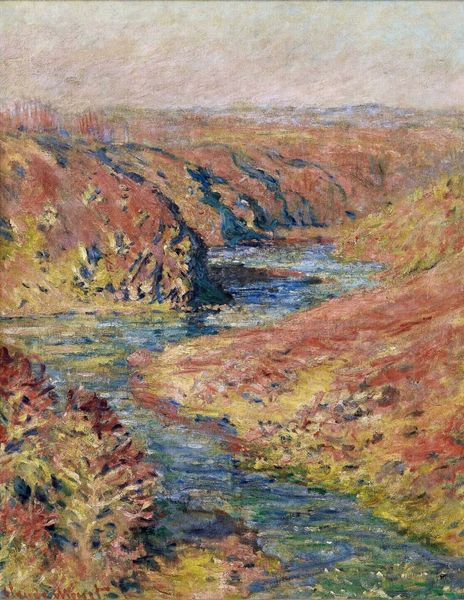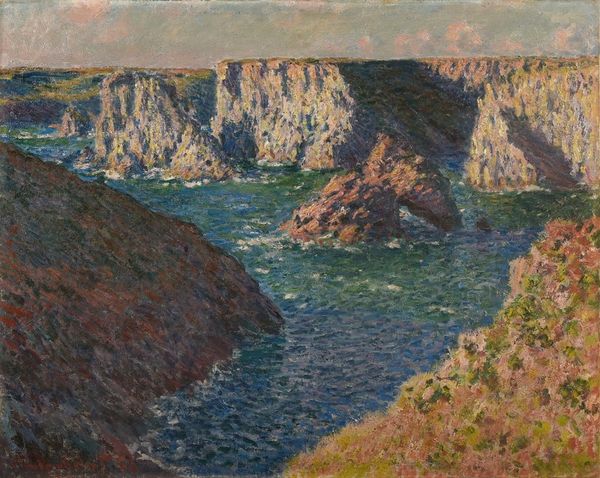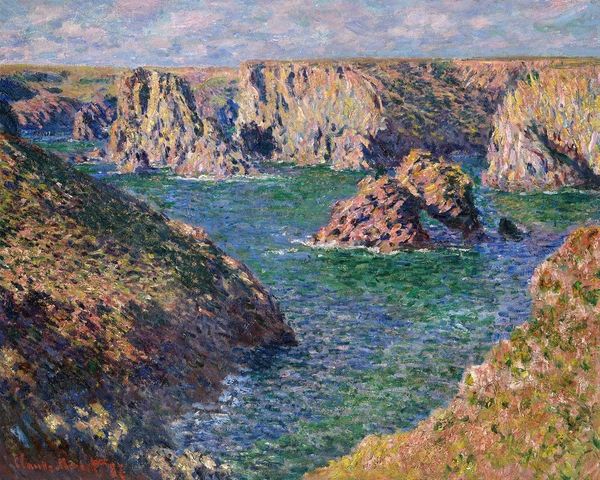
painting, plein-air, oil-paint
#
painting
#
impressionism
#
plein-air
#
oil-paint
#
landscape
#
nature
#
realism
Copyright: Public Domain: Artvee
Curator: Here we have Claude Monet's "Les ravins de la Creuse," painted in 1889. It’s a remarkable example of his plein-air landscape work. Editor: The painting almost hums with energy. The rapid brushstrokes and the way the light flickers across the water make it incredibly vibrant. It feels almost overwhelming, like nature’s raw power distilled onto canvas. Curator: Monet's "Creuse" paintings are interesting in his development as a painter of place. He spent a few months in this area of France focusing almost exclusively on these deeply carved river valleys. His patrons must have wondered if his career would survive this turn. Editor: I'm drawn to how Monet renders the rocks themselves. They are not static geological features, but seem to breathe with their own life force, almost like the gnarled faces of ancient guardians of the river. The rocks have always represented that sense of the timeless to people. Curator: Certainly, and that connects with how he was perceived then. Critics often focused on his ability to convey fleeting impressions of light, they sometimes missed how his landscapes engage with broader discussions about nature. Editor: The cool blues of the water contrast beautifully with the warmer, earthy tones of the ravine walls. It's like a visual representation of the life cycle itself. Water carving through rock. The ephemeral and the eternal in dialogue. Curator: And what that dialogue means for the individual. In Monet’s time the French state was actively developing and promoting the region, partly through artist patronage. There's a subtle tension between untouched wilderness and a nation's self-image as an arbiter of refined taste. Editor: It is a potent reminder that even seemingly timeless natural settings carry layers of social and political meaning, echoing in the visual languages. Curator: Indeed. A work like this allows us to revisit and renegotiate what the “natural” even signifies, in any era. Editor: A compelling testament to the ongoing, intricate dialogue between art, nature, and humanity’s ceaseless quest for symbolic meaning.
Comments
No comments
Be the first to comment and join the conversation on the ultimate creative platform.
